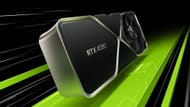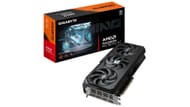The Nvidia RTX 4080 and AMD RX 9070 XT are some of the highest-end GPUs on the market. They were launched to target high-resolution gaming at the highest settings without compromises. While both GPUs bundle enough rendering potential to perform flawlessly in the most demanding titles, there are significant gaps between what they bring to the table. For Nvidia, it is a premium experience with support for DLSS frame generation and high-end ray tracing, while AMD is hyper-focused on price-to-performance and raw rendering capabilities.
However, which is the better buy for competitive and regular high-resolution gaming? In this article, we have dissected the two graphics cards and tried to answer this question.
The Nvidia RTX 4080 and AMD RX 9070 XT are some of the fastest GPUs in the market

The Nvidia RTX 4080 and RX 9070 XT are two wildly different video cards in terms of their underlying hardware, what they try to achieve, and the supported feature list. A quick look at the hardware specs is a good way to understand what each GPU offers.
Specs comparison
In terms of the underlying hardware, the RTX 4080 is based on the last-gen Ada Lovelace architecture. You get a total of 9,728 CUDA cores and 16 GB of GDDR6X video memory to handle the latest titles at 4K without compromises. The card still ranks among the fastest GPUs in the market thanks to its 304 Tensor cores, 76 RT cores, and 76 Streaming Multiprocessors. In terms of raw rasterization capabilities, it is pretty close to the new RTX 5070 Ti and the RX 9070 XT.
On the other hand, the AMD Radeon RX 9070 XT is powered by the brand-new RDNA 4 architecture and, therefore, is wildly different in its on-paper specs. This is also what makes an apples-to-apples comparison impractical.
In terms of what you get, the card bundles 4096 Stream Processors, 64 Ray Accelerators, and a similar 16 GB GDDR6 video memory buffer. However, the VRAM is slightly slower, which results in a mildly lower bandwidth.
The detailed specs sheets of the two GPUs are as follows:
In terms of pricing, the AMD card takes a massive lead. The card has been introduced at just $599, which makes it half as costly as the launch MSRP of the 4080. However, we couldn't spot any deals on the 9070 XT at its MSRP. As such, both GPUs might cost you the same, which motivates this comparison article.
Performance comparison

Performance is the main ground for comparison, especially when it comes to competing offerings from Nvidia and AMD. Both the RTX 4080 and RX 9070 XT have beefy specs sheets, which makes the GPUs attractive options for high-res gaming.
Below is a list of frame rates achieved by either card in some of the latest video games at 1440p. The numbers were sourced from the YouTube channel Testing Games.
Over a variety of games, the performance is a mixed bag. However, AMD edges out Team Green by a slim 0.42%. In titles like Forza Horizon 5 and Microsoft Flight Simulator 2024, AMD takes a lead of up to 20%. However, games like Kingdom Come Deliverance 2 and Silent Hill 2 favor the 4080's hardware stack as it delivers up to 30% better performance than the AMD GPU.
At 4K, the numbers change slightly and so does the pattern.
At 4K, the AMD RX 9070 XT, on average, is about 2.54% slower than the 4080. This is primarily because the Nvidia GPU catches up, thanks to its beefier underlying hardware. Particularly, ray-traced titles showcase a wider gap, which underscores Team Red's continued poor performance at this metric.
Overall, the performance differences between the AMD Radeon RX 9070 XT and the RTX 4080 are pretty varied based on what you're looking for from your system. If 1440p is all you care about, the AMD card's added rendering potential makes it a better candidate to power through the most demanding titles.
However, at 4K, especially in more demanding ray-traced workloads, the cheaper RTX 5070 Ti can be a better alternative to the costlier RTX 4080. The Blackwell card is available at its $749 MSRP while being about as capable as the 4080 Super. Moreover, you also get DLSS 4 with multi-frame generation, which helps justify the expense.
